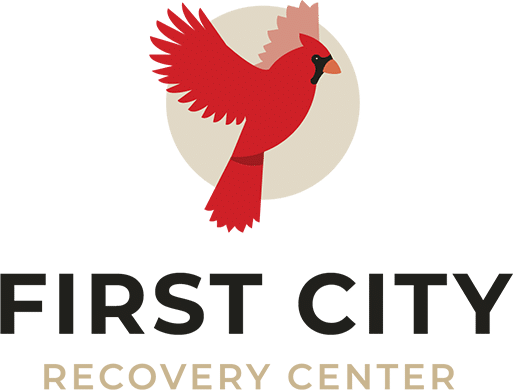Dangers of Mixing Opioids and Benzo Use
Taking one opioid medication for pain opens people up to risks, but sometimes, people are afflicted with multiple conditions that require medication. This has led to the trend of people taking opioid medications and medicines that treat anxiety at the same time. This is worrisome because combining these medications increases the risk of dependency, overdose, and death. Although someone taking the medications could know what the effects will be when taking opioids and benzodiazepines on their own, the effects of mixing opioids and benzodiazepines can be unpredictable. Therefore, people must refrain from mixing these drugs at all costs.
Table of Contents
ToggleWhat Are Opioids?
Opioids are medications that bind to the opioid receptors in the brain for the purpose of relieving pain. They include prescription medications, like OxyContin and Percocet, but opioids can also be purchased illegally. Heroin is one of those types of drugs. Physicians prescribe these medications for patients experiencing severe pain, like if a patient has had surgery or has advanced forms of cancer. The most common prescription opioids are Vicodin and oxycodone.
Vicodin
Vicodin contains hydrocodone and acetaminophen, and doctors prescribe this medication when their patients cannot tolerate other types of pain medications. It is prescribed for pain more than any other medication in the United States. Doctors prescribe it for patients experiencing moderate to severe pain.
Oxycodone
Oxycodone also relieves moderate to severe pain, but physicians prescribe it when a patient’s pain is expected to last for long periods of time. It comes in extended-release capsules and tablets for severe pain that needs to be treated 24 hours a day. Only people tolerant of opioid medications receive prescriptions for oxycodone.
Percocet is a combination medication that contains oxycodone and acetaminophen. It is prescribed to treat moderate to severe pain. OxyContin is the brand name for oxycodone and is prescribed for patients who have been taking large doses of opioid medications for cancer pain.
How Did Opioid Misuse Become a Crisis?
In the 1990s, the pharmaceutical companies led physicians to believe that opioid medications were not addictive. Because of this reassurance, physicians began to prescribe opioid pain medications in great numbers, and this resulted in “the opioid crisis.”
During this time, people began to misuse these medications as they had developed substance use disorders, and the industry had to admit that opioid medications are highly addictive. However, by this time, 47,000 people had overdosed on prescription opioids, heroin, and fentanyl.
In 2017, many people died of overdoses, but many others also developed substance use disorders. Approximately 1.7 million Americans had substance use disorders that were related to opioid use. In addition to that, 652,000 adults had a heroin use disorder.
Benzodiazepines or “Benzos”
Benzodiazepines are prescription sedatives. Physicians prescribe them for patients experiencing anxiety or insomnia. They are also medications that relieve seizures, muscle spasms, and alcohol withdrawal. These medications increase the amount of GABA in the body, which is an inhibitory neurotransmitter.
Xanax or alprazolam and Valium or diazepam are prescribed more than any other benzodiazepines in the U.S. Physicians prescribe these medications for patients experiencing panic disorders and anxiety. In addition to that, doctors prescribe Valium to relieve withdrawal symptoms and treat seizures.
The Abuse of Opioids and Benzos
People are misusing opioids and benzodiazepines more than any other medications in the world. For example, more than 136 Americans are dying of opioid overdoses every day, but an increasing number of people filled a prescription for benzodiazepines between 1996 and 2013. Physicians frequently prescribed both types of medications for the same patient.
Combining opioids and benzodiazepines is a problem because both medications cause patients to be sedated and suppress their breathing. This is the reason that many people overdose on these medications. Even so, between 2001 and 2013, the number of people prescribed both medications increased by 17%. In 2001, the number of people receiving both prescriptions was only at a rate of 9%.
One study showed that this combination increases the risk of these patients being taken to the hospital because people are taking more of the medication than their physicians prescribed so that they can get high.
Some people were unwittingly introduced to the idea of combining opioids and benzodiazepines by their doctors. Physicians would prescribe Valium to relieve a patient’s muscle spasms after they prescribed Vicodin to these same patients for their chronic pain. It may also be that a patient received a prescription from a primary care physician for oxycodone to treat chronic pain. Later, this same patient may obtain a prescription from a therapist for Xanax to treat anxiety.
Because of the prescribing habits that have been going on for several decades, the Centers for Disease Control and Prevention gave new guidelines to physicians for prescribing opioid medications. For example, one of the guidelines recommends that physicians refrain from prescribing opioids and benzodiazepines for the same patient as much as possible.
The Food and Drug Administration also added “black box” warnings to containers of opioids and benzodiazepines. These warnings inform the people taking these medications that it is dangerous to combine these two drugs. They also advise patients to consult their doctors about all of the medications that they are currently taking.
Why You Should Not Mix Opioids and Benzodiazepines
Vicodin and oxycodone are both listed under Schedule II of the Schedules for Controlled Substances. This means that the Drug Enforcement Administration considers both of these medications to be dangerous. They have a high potential for being misused, and they could lead users to develop a physical dependence or a psychological dependence on the substances.
Xanax and Valium are benzodiazepines listed under Schedule IV on the Schedules for Controlled Substances. This means that they have a low potential for abuse.
Can You Overdose on Opioids and Benzodiazepines?
If a patient takes large amounts of oxycodone or Vicodin, there is a chance of overdosing on these medications. Oxycodone or Vicodin can cause your breathing to slow down to a dangerous pace. Sometimes, your breathing can stop altogether, and this leads to overdose deaths. When people mix Xanax or Valium with oxycodone or Vicodin, this can cause a fatal overdose to occur.
Xanax is a particularly dangerous drug when it is taken with opioid medications. Many overdoses occurred because someone combined Xanax with opioids or another substance.
Why Do People Take Opioids and Benzos Together?
Opioids have the potential to cause users to develop a tolerance. This means that the drugs stop relieving pain at the dose the person has been taking. To continue to experience pain relief, the patient’s doctor must increase the dose of the medication. When people began to become tolerant to their opioid medications, they began to add benzodiazepines to the opioid prescription so that they could enjoy the pain-relieving effects once again.
In addition to eliminating the tolerance, mixing opioids and benzos together also increases the high that people get from taking opioids. Adding the benzos makes it so that they experience the same high that they experienced when they first used the drug.
The enhanced effects caused by benzodiazepines may be the reason that nearly half of the deaths that were due to opioids also included another medication that contributed to the deaths. In most of these cases, the other drug was a benzodiazepine. As a matter of fact, benzodiazepines were found in 16% of these overdose cases. The likely cause of death in these instances was respiratory arrest, which is a life-threatening situation that requires immediate medical attention.
Opioids and Benzos Separately
If you take an opioid drug or a benzodiazepine medication, there is a possibility of taking too much and overdosing. Overdosing on oxycodone can cause the following symptoms:
• Unresponsiveness
• Cold and clammy skin
• Pinpoint pupils or wide pupils
• Muscle weakness
• Sleepiness
• Slow or labored breathing
• Difficulties breathing
You can also overdose on Xanax or alprazolam. The following symptoms of overdose include the following:
• Unconsciousness
• Lack of coordination
• Confusion
• Drowsiness
Combining Opioids and Benzodiazepines
When you mix opioids and benzodiazepines, it causes respiratory depression. This is when a person’s breathing is slower than it is normally, and the body cannot function correctly.
While you inhale air, oxygen enters your lungs, then enters your bloodstream, and travels around to all of your organs. Your organs also create the waste product “carbon dioxide,” and your blood takes it from your organs to your lungs. When you exhale, you are able to release the carbon dioxide. This is what happens normally.
When you mix opioids and benzodiazepines, your breathing slows down considerably, and your body has difficulties completing the cycle described above. When your body cannot efficiently remove the carbon dioxide, it creates a condition called “hypercarbia,” and your cells are not getting enough oxygen, a life-threatening condition called “hypoxia.”
Opioids and benzodiazepines can both have this effect on the body individually as well as collectively. When respiratory depression occurs because the person is misusing drugs, this person may begin to experience respiratory arrest when the person stops breathing while the heart continues to beat.
In addition to respiratory arrest, hypoventilation that happens on several different occasions may cause pulmonary hypertension. This condition affects the right side of the heart. Blood vessels in this area of the heart take blood into your lungs. This becomes harder as the pressure within the blood vessels increases, and it can cause heart failure and death.
The Effect on the Brain
As opioids and benzodiazepines slow breathing down, it causes a condition called “cerebral hypoxia.” This is when the brain is not receiving enough oxygen. The brain must receive a consistent supply of oxygen and nutrients in order to function properly. Drug overdoses are a common cause of this condition.
Brain damage can begin to occur rapidly because brain cells begin to die after they stop receiving oxygen after as little as five minutes. The brain damage can be severe, but the person is also in danger of dying.
Get Help Today
Misusing opioid medications and benzodiazepines could result in a substance use disorder, but mixing these two medications presents people with an even more dangerous situation. If you or a loved one are struggling with addictions to opioids or benzodiazepines, you must get help, and First City Recovery Center is here for you when you’re ready to make that call.
Whether or not you have a prescription for the medications you have been using doesn’t matter to us. We will treat you for your substance use disorder if you are addicted to opioids, benzodiazepines, stimulants, or sleeping pills. Because these medications can cause disturbing withdrawal symptoms, we will place you in our medical detox program first. Then, we will continue your treatment and see you through the program. Your road to sobriety starts at First City Recovery Center — call us today.




